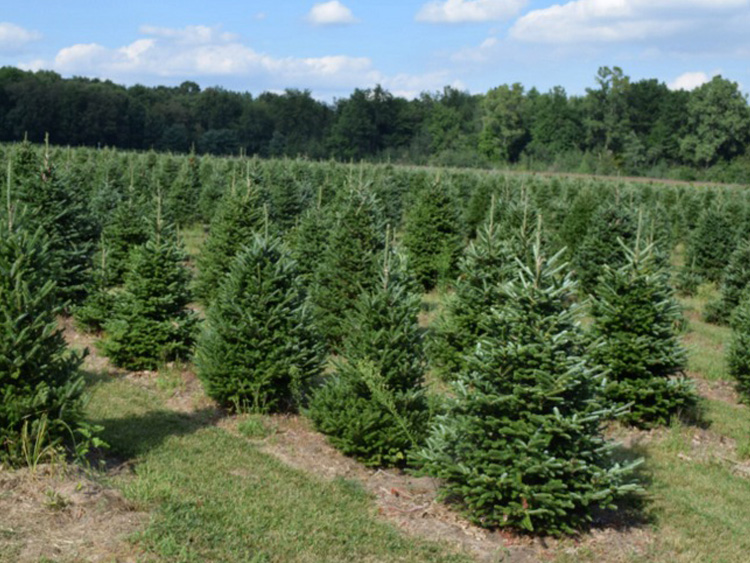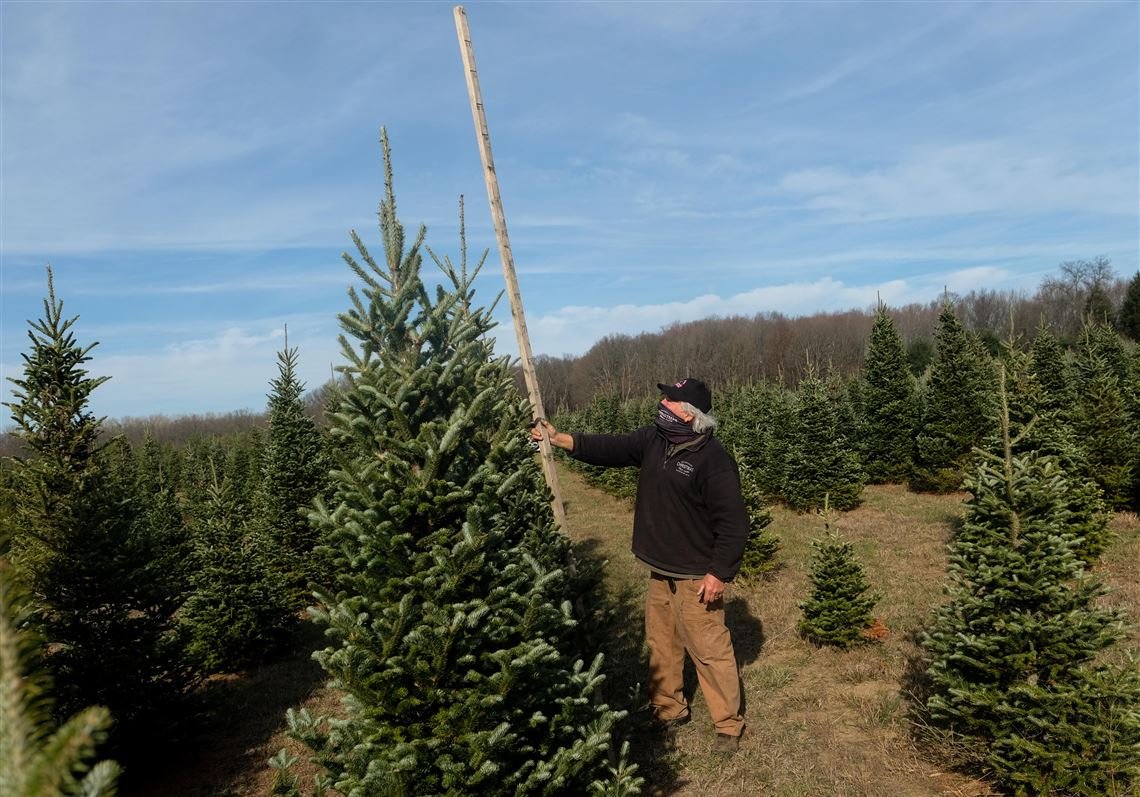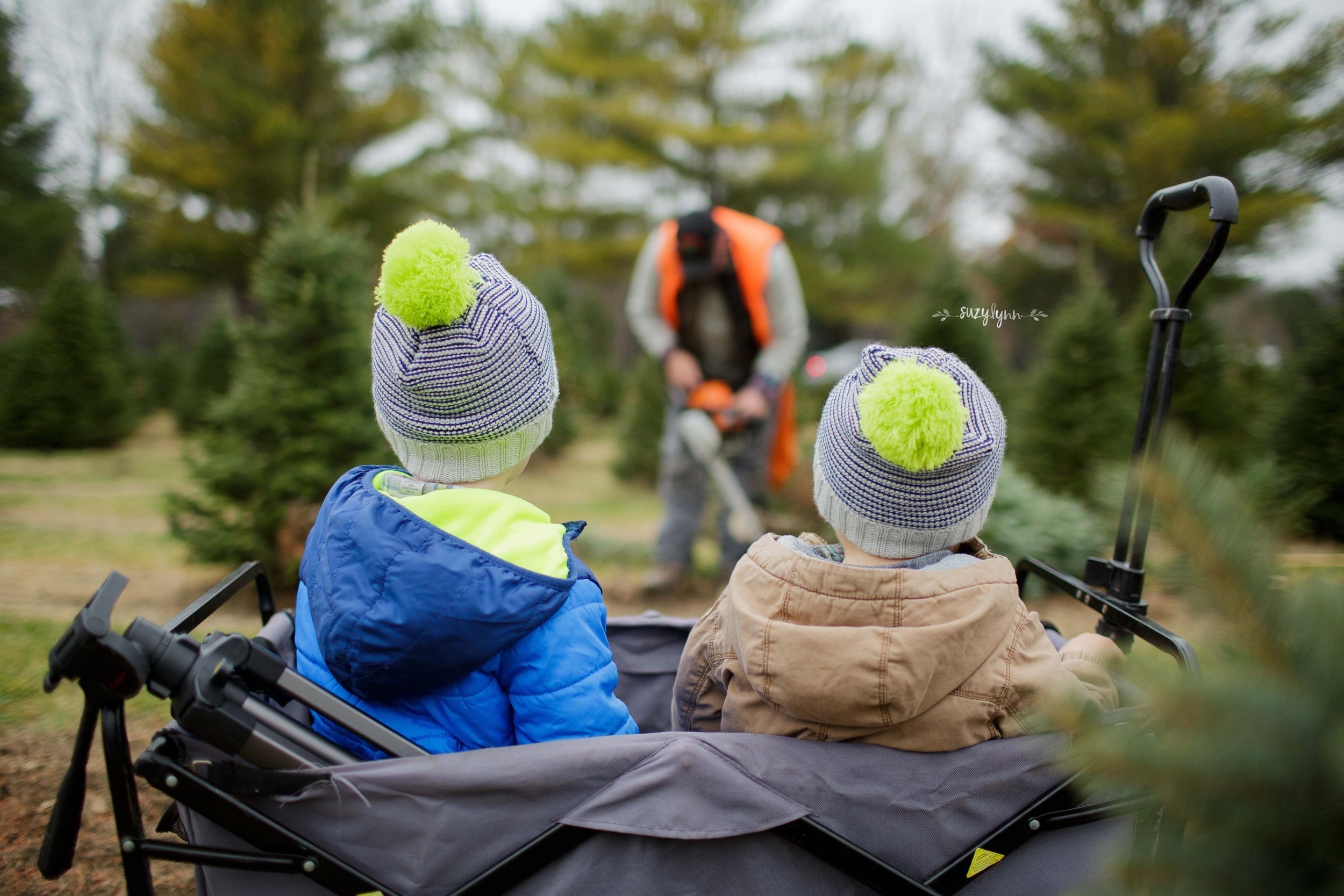The Whitehouse Christmas Tree Farm 2024 Season
November 27th - December 15th
Great Variety
Once you select the perfect Christmas Tree — we will cut, shake, and load the tree onto your vehicle.
Giving Back
For years, we have been participating in several programs to help bring holiday cheer to our military families locally and throughout the world.
Trees for Troops
Now through December 8th, we are participating in a joint program with the National Christmas Tree Association and FedEx. A minimum of 100 trees per year are donated to military families through this program.
There’s no season like the Christmas Season, and there is no better family tradition than picking out your own Christmas Tree! After selecting your tree, we will cut, shake and load the tree on to your vehicle. It is a heart-warming experience you’ll want to enjoy year after year. We guarantee you will be satisfied with your experience and your tree, or we will give you your money back.
TREES FOR TROOPS
We would like to thank past and future contributors to the Trees for Troops Program. Trees for Troops has provided more than 309,644 real Christmas Trees to military families since 2005. This includes 16,252 trees delivered to 94 military bases during the 2023 Christmas season. Your contribution helps to make the holidays a little brighter for military families across the nation and around the world.
Christmas Tree Farmers across the nation are participating in the Trees for Troops program. This year, trees from The Whitehouse Christmas Tree Farm will be shipped to an Army Base in Fort Cavazos, Texas.
We are offering an opportunity for the community to donate money towards a tree to fill up the FedEx trailer, which can hold approximately 200 trees. Any contributions will be accepted. Donations can be made through Venmo: @WheelerFarms, dropping off in-person at the checkout trailer, or with a check mailed to: “The Whitehouse Christmas Tree Farm” 11266 Obee Rd. Whitehouse, OH 43571.
SPECIAL RECOGNITION
Honoring Vietnam Veterans
25 - 7' Trees will be given to Vietnam Veterans that were stationed in Vietnam.
Please note that if a tree is selected over 7’ tall, the additional height will be charged at the normal rate.
PHOTOGRAPHY AT THE WHITEHOUSE CHRISTMAS TREE FARM
You’re welcome to take lots of snapshots while you’re at the farm to select your Christmas Tree, but you must have an advanced and confirmed reservation to bring a photographer (amateur or professional) to have a photo shoot at the farm. Confirmed reservations and payment are required at least 2 weeks in advance of a photo session.
Photo sessions are separate from Christmas tree sales and are only allowed during our select Photo Days. All Photography is by Appointment Only (no walk-ons).
Photography is only allowed until November 3rd OR after Christmas.
We strongly encourage families & couples to schedule a time in the early Fall, before the “rush” for Family Christmas pictures sets in. We do not allow photographers (professional or amateur) during our tree-sales days, as this has proven too disruptive and often dangerous to families who are looking for trees to cut.
If interested in booking a session for the 2024 Season, please email [email protected]. Sessions are priced at $100/Hour with a one (1) hour minimum. Payment must be received one week prior to the photo shoot.
Location & 2024 Season Hours
Directly across from The Butterfly House at 11500 Obee Road, Whitehouse, Ohio.
Wednesday, November 27th 10AM - 5PM (Fresh Cut Trees Only)
Friday November 29th:
9AM - 5PM
Tuesdays-Fridays:
2PM - 5PM
Saturdays & Sundays through 12/15:
10AM - 5PM
The Whitehouse Christmas Tree Farm
11500 Obee Rd.
Whitehouse, OH 43571
-
Displaying trees in water in a traditional reservoir type stand is the most effective way of maintaining their freshness and minimizing needle loss problems.
Make a fresh cut to remove about a 1/2-inch thick disk of wood from the base of the trunk before putting the tree in the stand. Make the cut perpendicular to the stem axis. Don’t cut the trunk at an angle, or into a v-shape, which makes it far more difficult to hold the tree in the stand and also reduces the amount of water available to the tree.
Once home, place the tree in water as soon as possible. Most species can go 6 to 8 hours after cutting the trunk and still take up water. Don’t bruise the cut surface or get it dirty.
If needed, trees can be temporarily stored for several days in a cool location. Place the freshly cut trunk in a bucket that is kept full of water.
To display the trees indoors, use a stand with an adequate water holding capacity for the tree. As a general rule, stands should provide 1 quart of water per inch of stem diameter. Devices are available that help maintain a constant water level in the stand.
Use a stand that fits your tree. Avoid whittling the sides of the trunk down to fit a stand. The outer layers of wood are the most efficient in taking up water and should not be removed.
Keep displayed trees away from sources of heat (fireplaces, heaters, heat vents, direct sunlight). Lowering the room temperature will slow the drying process, resulting in less water consumption each day.
The temperature of the water used to fill the stand is not important and does not affect water uptake.
Check the stand daily to make sure that the level of water does not go below the base of the tree. With many stands, there can still be water in the stand even though the base of the tree is no longer submerged in water.
Drilling a hole in the base of the trunk does not improve water uptake.
Use of lights that produce low heat, such as miniature lights, will reduce drying of the tree.
Always inspect light sets prior to placing them on the tree. If worn, replace with a new set.
Do not overload electrical circuits.
Always turn off the tree lights when leaving the house or when going to bed.
Monitor the tree for freshness. After Christmas or if the tree is dry, remove it from the house.
Go to www.realchristmastrees.org and type in your ZIP code to find a recycling program near you.
Never burn any part of a Christmas tree in a wood stove or fireplace.
-
There are approximately 33 million Real Christmas Trees sold in North America every year.
Approximately 330,000 Real Christmas Trees are sold via e-commerce or catalogue and shipped mail-order.
North-American Real Christmas Trees are grown in all 50 states and Canada. Most artificial trees are manufactured in China, Taiwan, or Hong Kong.
Real trees are a renewable, recyclable resource. Artificial trees contain non-biodegradable plastics and possible metal toxins such as lead, cadmium, and organo-tins.
Consumers can locate the nearest recycling program by logging onto www.realchristmastrees.org or calling 1-800-CLEANUP.
For every Real Christmas tree harvested, 2 to 3 seedlings are planted in its place the following Spring. In the Spring of 2001, over 73 million Real Christmas trees seedlings were planted.
There are about 1 million acres in production for growing Christmas Trees. Each acre provides the daily oxygen requirements of 18 people.
There are about 15,000 Christmas Tree growers in North America, and over 100,000 people employed full or part-time in the industry.
It can take as many as 15 years to grow a tree of average retail sale height (6 feet), but the average growing time is 7 years.
The top Christmas tree producing states are Oregon, North Carolina, Pennsylvania, Michigan, Washington and Wisconsin.
The top selling Christmas Trees are: Balsam fir, Douglas-fir, Fraser Fir, Noble Fir, Scotch Pine, Virginia Pine, and White Pine.
-
According to the National Fire Protection Association (NFPA), approximately one tenth of one percent (0.12%) of residential fires involve a Christmas Tree — both real and artificial.
At NO time can a Real Christmas Tree START or CAUSE a fire. Christmas Trees do not spontaneously combust.
In 1998 more than 32 million Real Christmas Trees were used in the U.S. Of these, only 0.00093% were ignited in home fires.
Christmas Trees are not as likely to be the first item ignited in residential fires as many other common household items:
newspapers and magazines — 13 times more likely
boxes or bags — 10 times more likely
curtains or drapes — 9 times more likely
Overloaded electric outlets and faulty wires are the most common causes of holiday fires in residences – these types of fires can be just as dangerous with an artificial tree.
The National Fire Protection Association tracks fires and their causes. According to their data, of all residential fires, Christmas Trees, both Real and fake, are ignited in less than 1/10 of one percent (0.1%) of all the home fires. Keep that in mind if you see a sensational blazing tree on the “Action News”. These trees are often doused in a flammable liquid or cut many months prior to harvest time. Trees that are kept fresh during the holiday season using the NCTA care tips are extremely difficult to ignite.
-
Over 35 million American families will celebrate this holiday season with a Real Christmas Tree. This is a long-standing tradition with many families, but where does this tradition come from and how did it start? Trees of all kinds have long been used as a symbol of life. To many ancient cultures, evergreens came to symbolize immortality, because they did not “die” when winter came as did many other trees and plants. To celebrate this triumph of life over death, people brought the evergreens into their homes.
The first recorded reference to the Christmas Tree dates back to the 16th century. In Strasbourg, Germany (now part of France), families both rich and poor decorated fir trees with colored paper, fruits and sweets. The retail Christmas Tree lot also dates back that far – in those times, older women would sell trees harvested from nearby forests.
Early decorations consisted mostly of food items such as cookies, candy and fruit. Later, Trees were decorated with other items such as ribbon, shapes cut out of tin, small books and lace. The first recorded use of lit candles to decorate a Tree dates back to the 18th century.
By the 1700′s, the tradition of the decorated Christmas Tree was firmly entrenched in Europe. The tradition was brought to the United States by German settlers and by Hessian mercenaries paid to fight in the Revolutionary War. In 1804 U.S. soldiers stationed at Fort Dearborn (now Chicago) hauled Trees from surrounding woods to their barracks at Christmas.
The popularity of the Christmas Tree then proliferated. Franklin Pierce, our 14th President, brought the Christmas Tree tradition to the White House. In 1923, President Calvin Coolidge started the National Christmas Tree Lighting Ceremony now held every year on the White House lawn.
Since 1966, members of the National Christmas Tree Association have presented a beautiful, fresh Real Christmas Tree to the President and first family. This Tree is displayed each year in the Blue Room of the White House.













